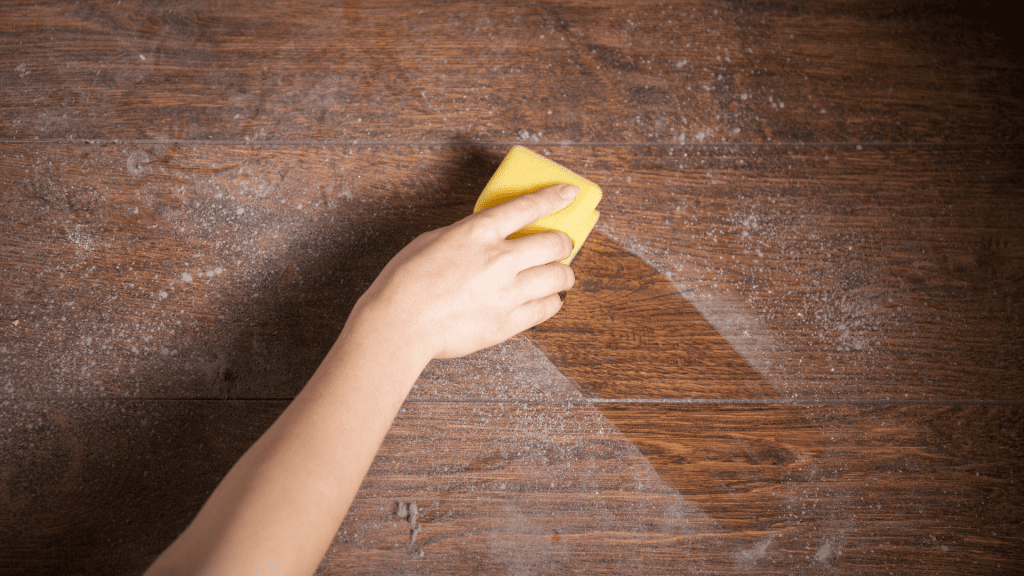
Renovation Dust Control: Is Your Home Healthy?
Your home remodel can transform your space, but it can also leave you in the dust.
In the latest survey conducted on healthy homes by Houzz*, out of 251 homeowners surveyed, 81% expressed that they were unhappy about the dust levels during their home remodel, and 85% said that the dust was the biggest remodeling inconvenience. Shockingly, despite nearly two-thirds of contractors acknowledging that homeowner health and renovation dust control are concerns during a remodel, fewer than two-fifths take adequate precautions to address the issue.
What’s worse is that this impacts young children the most. Small children breathe at a higher rate, which means they are especially vulnerable to the harmful effects of dust toxins. Studies** have shown that house dust mite allergens are an important cause of childhood asthma, and remodeled homes can have five to eight times more dust particles than those that aren’t.***
Home remodeling is a dusty process from the beginning to the end. You’re causing dust when:
- Tearing down walls, ceilings, and floors
- Installing drywall
- Repairing floorings
- Plastering
- Sanding
- Refinishing
- Installing HVAC systems
There’s a dust component in almost every remodel project we at Pathway Design & Construction undertake. If not properly captured, it’ll filter throughout your home and persist long after your remodel.
To protect your health and that of your family, here’s what our team does when remodeling a home:
1. Communicate Openly
Before getting started, we have a chat about your home remodeling project and our approach to healthy homes. I’m passionate about safeguarding your health throughout the remodeling process. We consider your family’s schedules and preferences when planning dust-heavy tasks to minimize disruptions and health concerns. Also, I ensure that my team takes care of themselves by using personal protective equipment like dust masks, safety goggles, and gloves during the remodel.
Unfortunately, not all of the renovation dust control strategies I’m about to discuss are standard practices in the home remodeling industry — but they should be. Too often, homeowners endure the lingering effects of dust toxins long after the remodel wraps up, and hiring an expert to clean up after costs thousands of dollars.
2. Contain Dust
The more dust we can quarantine from the rest of the home, the better. During the remodel, we seal off your home renovation zone using plastic sheeting or tarps on your walls and floors, effectively containing dust and preventing it from spreading to other areas of your house. Creating an entryway with zipper doors and covering all ductwork further minimizes dust migration.
3. Ventilate Properly
Containing workspaces to minimize air movement from the area under demo or construction to the rest of the home is not enough. We use negative air machines to suck and cycle the dusty air in the construction area through the machine’s HEPA filter and exhaust it outside the home. We invested in several machines and use them on every project. This goes a long way to ensuring that dirty air is not recycled through the heating and ventilation system, spreading dust and allergens throughout the home.
4. Get Wet
Misting surfaces with water before you start sanding or sweeping helps suppress dust particles. The moisture weighs down the dust, keeping it from dispersing into the air. Even using something as basic as a spray bottle can make a big difference.
5. Clean Regularly
Lastly, we have a daily cleaning routine to remove dust and debris from their work area and surrounding spaces. I recommend using a dust extraction system, like HEPA (high-efficiency particulate air) vacuums to capture fine dust particles, wiping down surfaces, and making sure HVAC vents are still properly sealed off. By implementing these dust control practices, we can keep your living space clean and healthy during construction and beyond.
At Pathway, we help homeowners create sustainable and functional spaces that promote healthy living. Are you ready to keep the dust out of your home? Send us a message today!
*For more information: click here
** Read more here.
*** And here.
